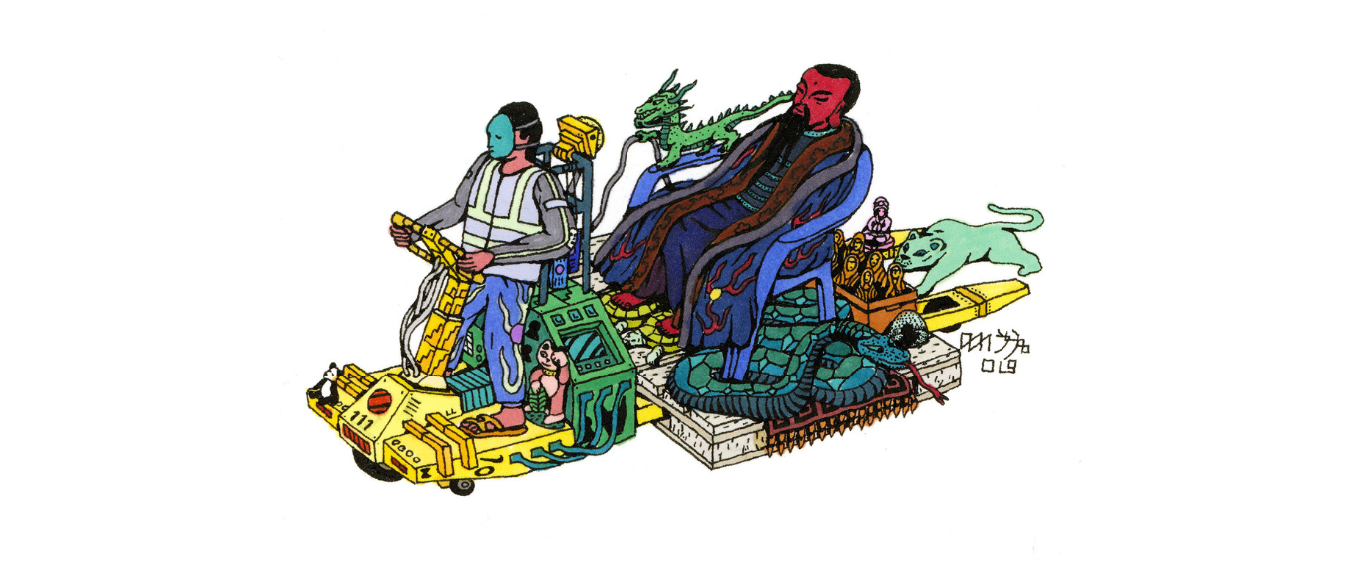CARTONE - A Survey Introduction to Cartooning
Despite our modern conception of cartooning, it is actually a centuries-old artistic practice. Originally adopted from the Italian cartone, they were drafts or studies that artists worked from. Of course, these first cartoons were more artistic sketch than Rick and Morty, but the origins of this Pop technique were always artistic. As newspapers grew in popularity in the nineteenth century, political satires drove cartoons into new territory. It was both a new field of commercial art and a new frontier for artistic exploration. Ever since, cartooning has straddled the line between popular media and fine art, a divide that many of our artists enjoy.
Cartooning has filtered across different cultures and spaces, encouraging people to interpret their surroundings and thoughts in new ways. With the influence of Japanese ukiyo-e printmaking through the nineteenth century, East Asia entered the sphere of cartooning and strongly influenced the Western practice. Ukiyo-e is a woodblock print method that has attained widespread fame through iconic images like Hokusai’s The Great Wave off Kanagawa. Clean linework, expressive figures, and strong color palettes would catch the eye of many European Post-impressionists like Degas and Monet. Much of modern Western art is indebted to the simplified expressiveness of Japanese printmaking, and it began exemplifying the West’s idea of what East Asian art is. We can still see the influence of these illustration techniques in Parisian artist Alexandre Cornet’s depictions of Hong Kong, as a Westerner visits the Eastern metropolis.
“Pak Tai, Lord of the Warehouse” by Alexandre Cornet.
Cartooning has also evolved in concert with technology, as we are able to fuse science fiction, digital, and analog art methods to create new worlds. Science fiction was a natural progression for cartoon art in the twentieth century—it was much easier to draw something that did not exist than to try to create all practical effects. That progress has not slowed in the twenty-first century, with Cartoon Network TV shows like Adventure Time and Steven Universe leading to renewed interest in sci-fi cartooning, particularly for children. Philadelphia-based artist Michon Proctor shows this confluence of interests through her Intergalactic Space Bears series of prints and toys.
“Graphic Bacilli Bear” by Michon Proctor.
Newspaper and journal cartoons were an early prototype for the modern meme, with drawn images framed by humorous or satirical captions. We currently live in the age of the meme, one that has deep roots in online cartooning. Early memes like the troll face and Pepe the frog are early-internet cartoons that have gained a massive (sometimes negative) cultural significance. Such is the cultural impact of memes that they have been the subject of art exhibitions and Cem A., owner of the art-world meme page @freeze_magazine, has been invited for lectures at the Royal College of Art in London. Playing with the conventions of traditional oil paintings, we see contemporary artists like Mary Engel producing works reflective of modern meme culture, derivative of earlier cartoon art. Mary Engel is a great example of the artistic legacy of cartooning. Once a traditional painter known for her masterful oil paintings of animals, Engel was inspired by Jedidiah Gallery’s diversity and fun tone, revitalizing her practice through cartoons. Oftentimes, it is when traditional techniques can no longer capture a certain feeling that innovation ensues.
“Sadness Bath” by Mary Engel.



